#RacismatOU: A march on Cutler
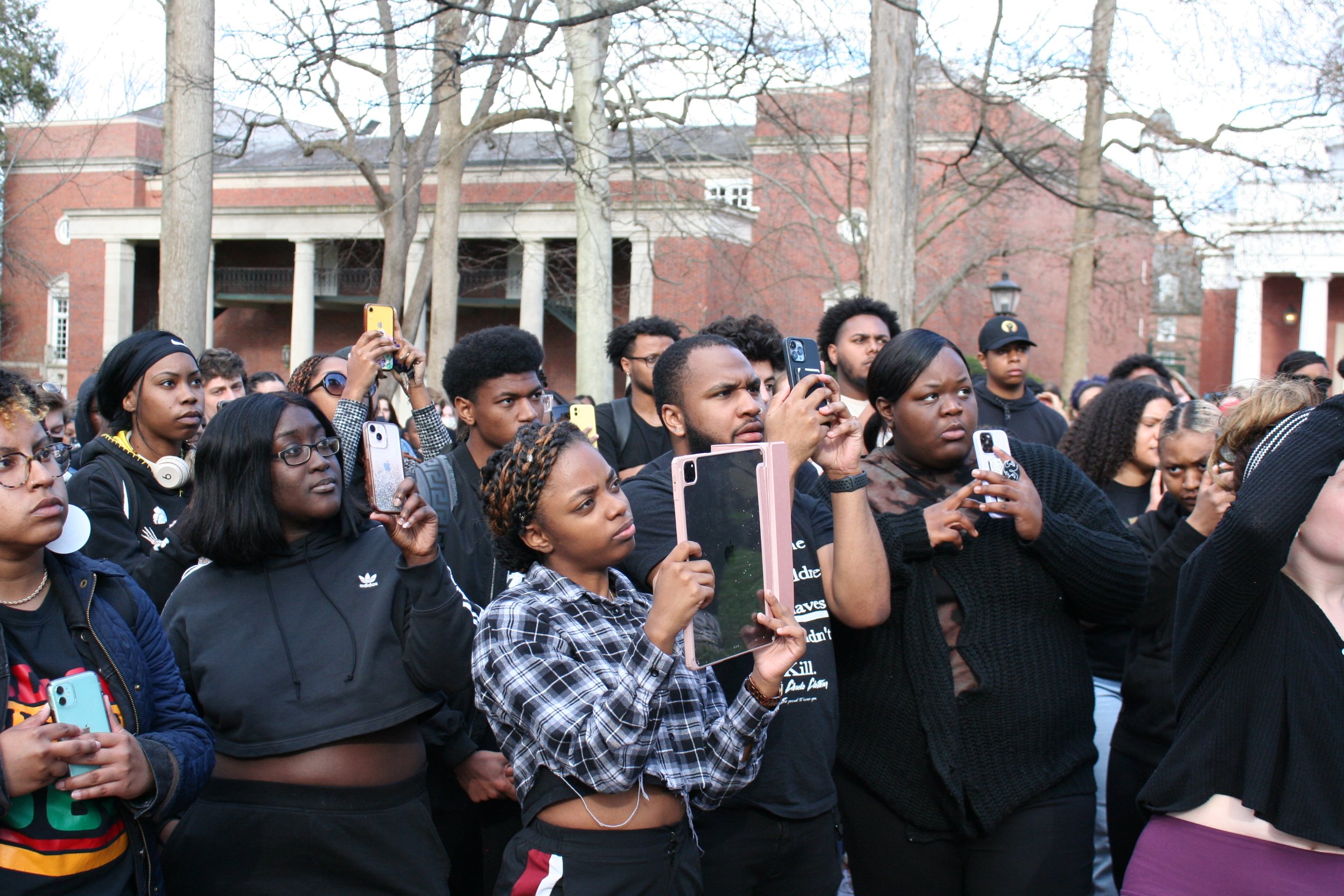
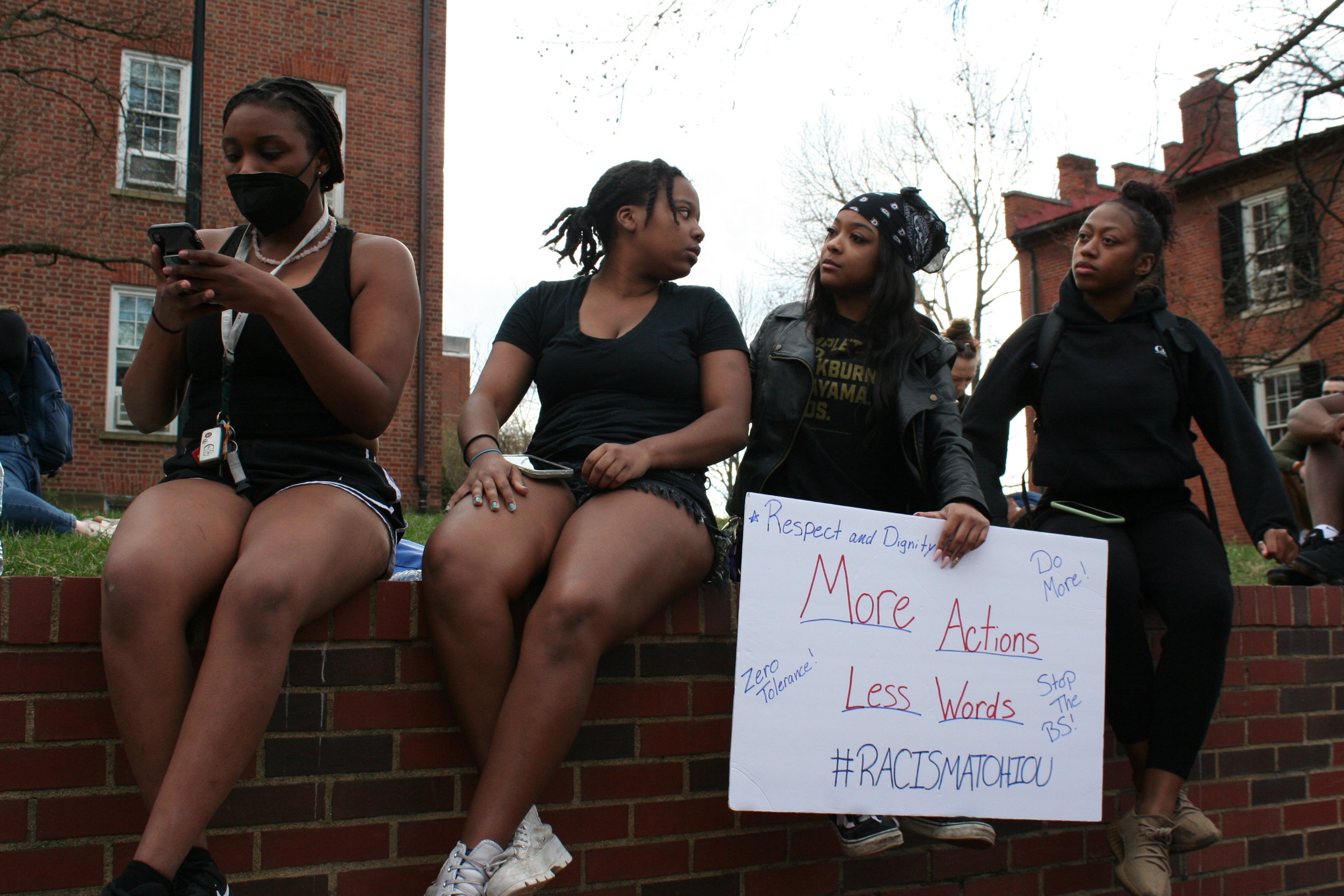
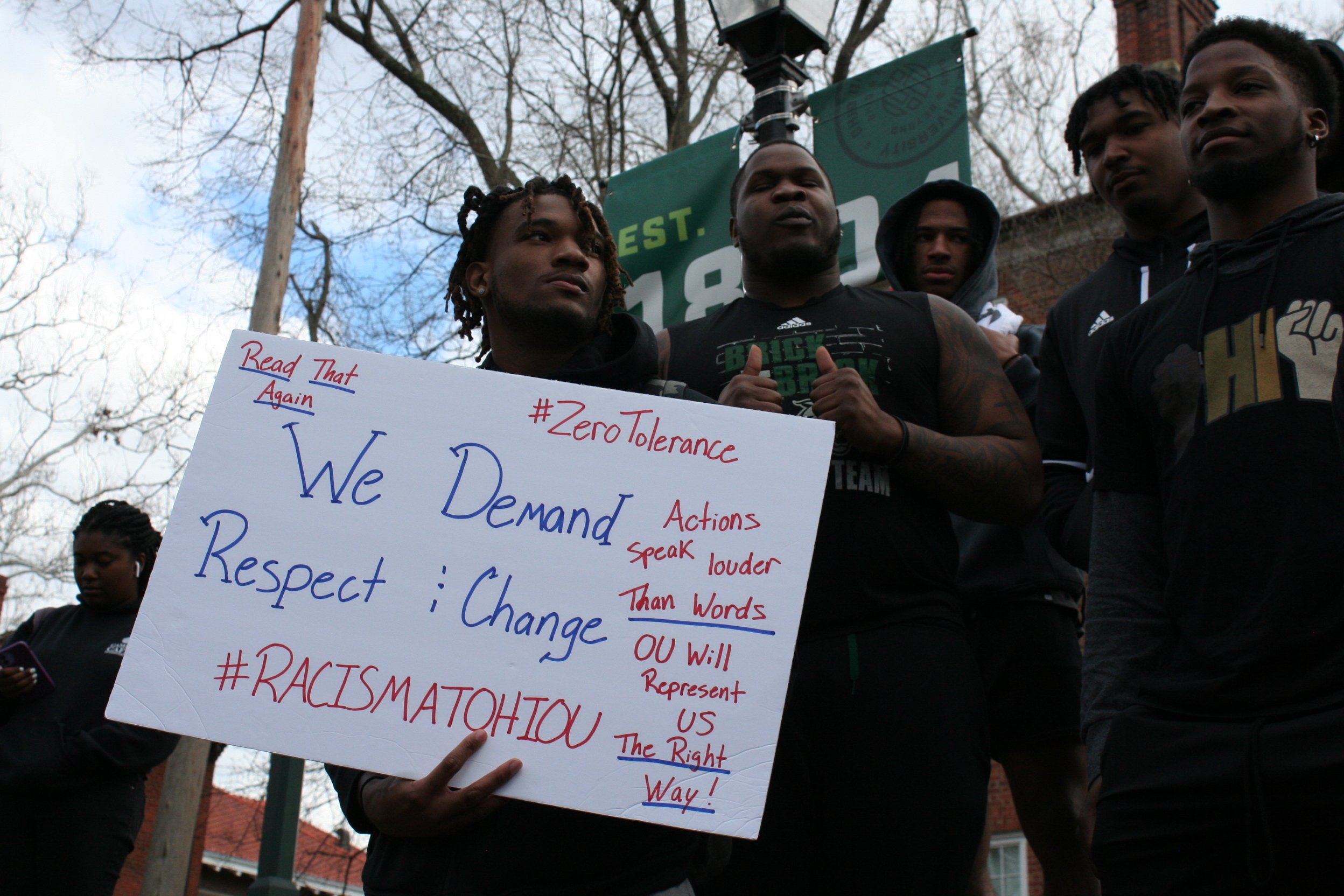
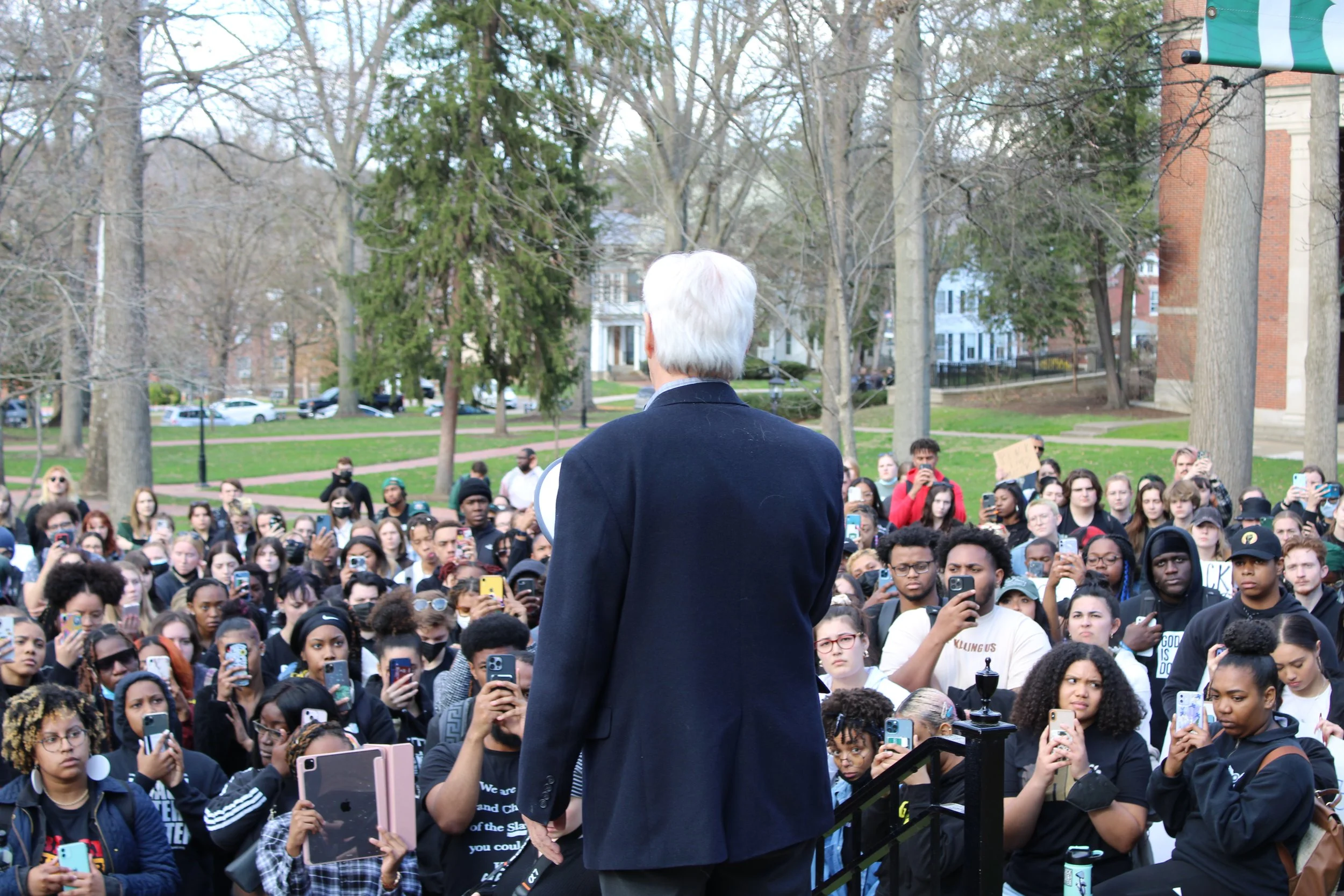
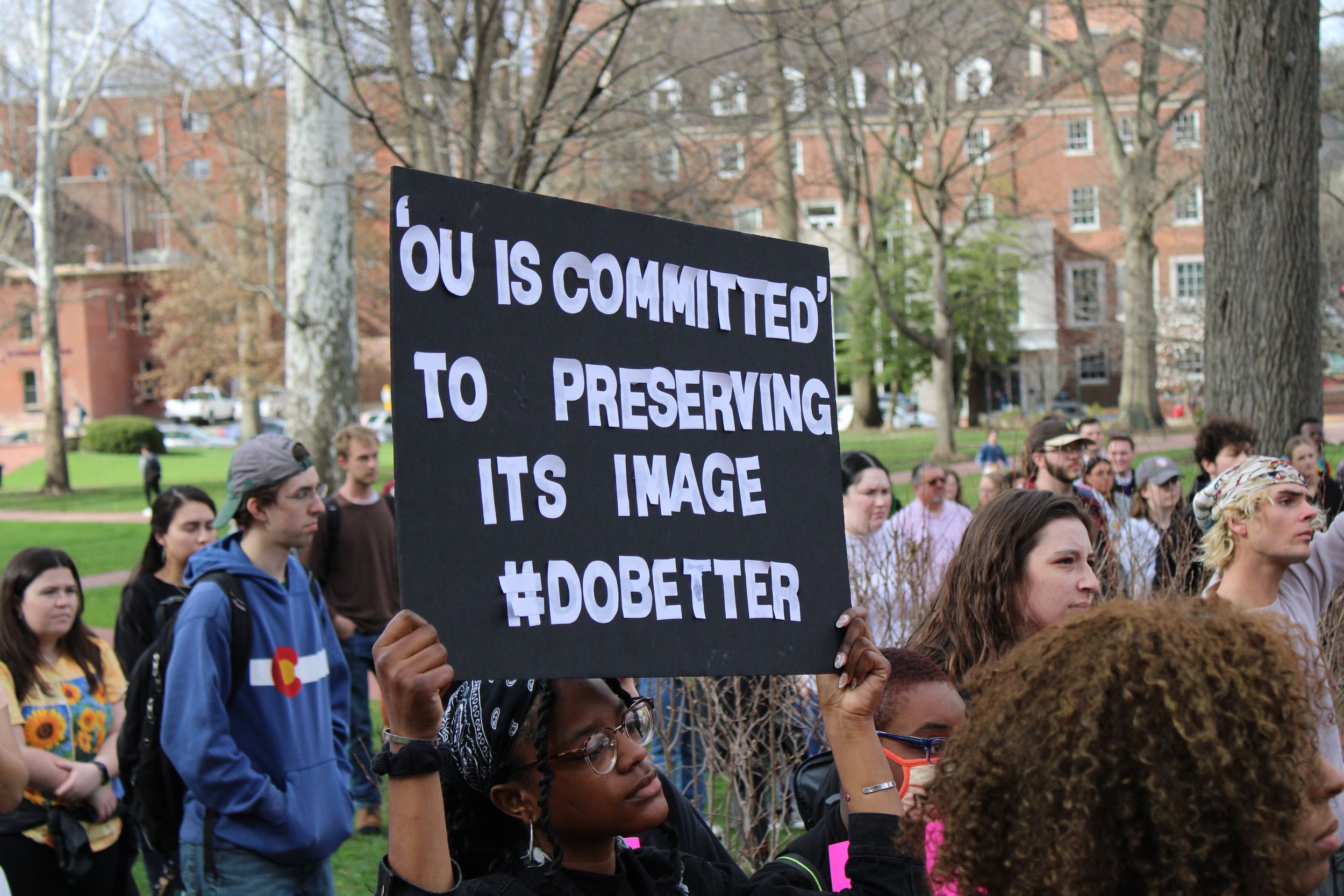
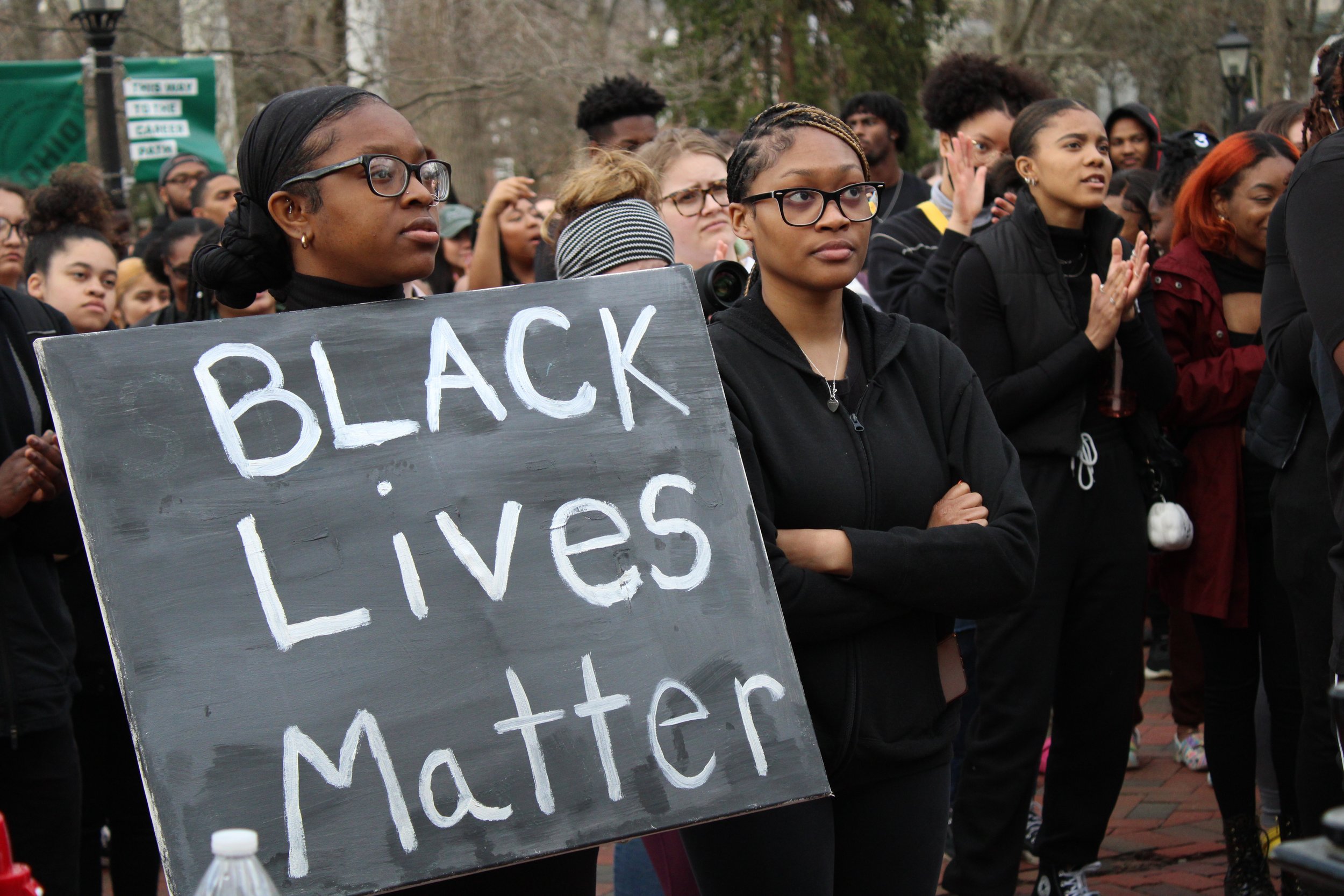
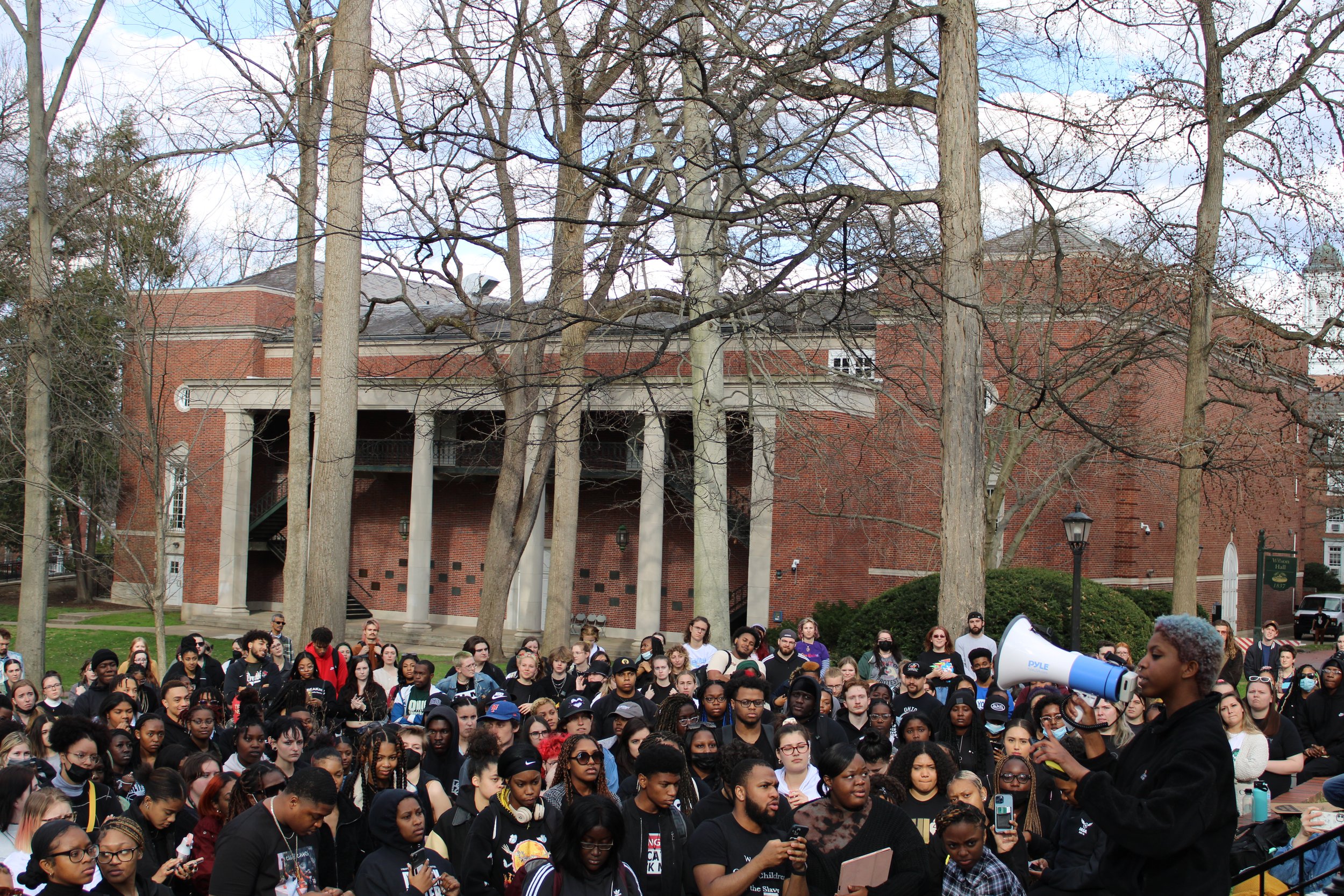
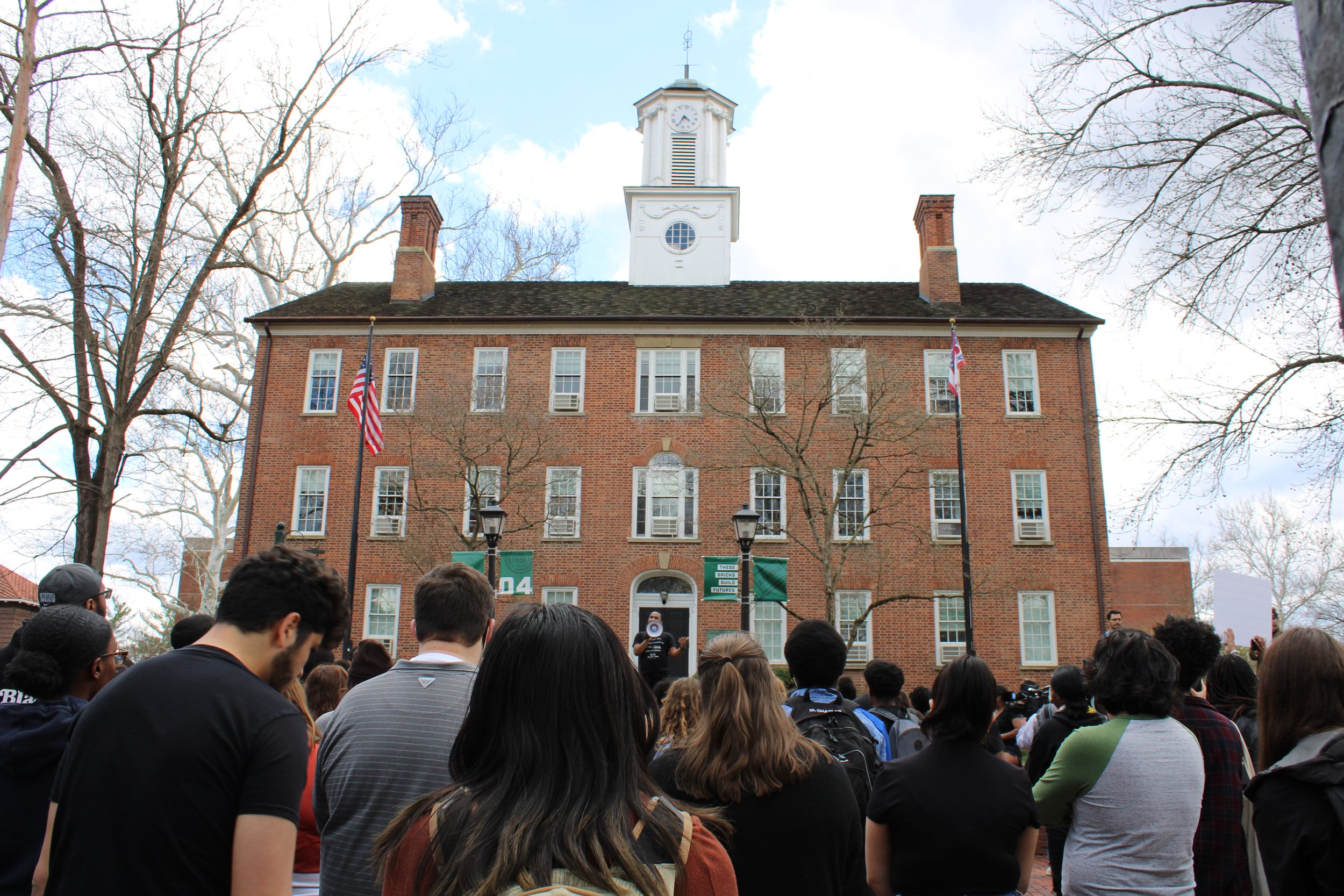
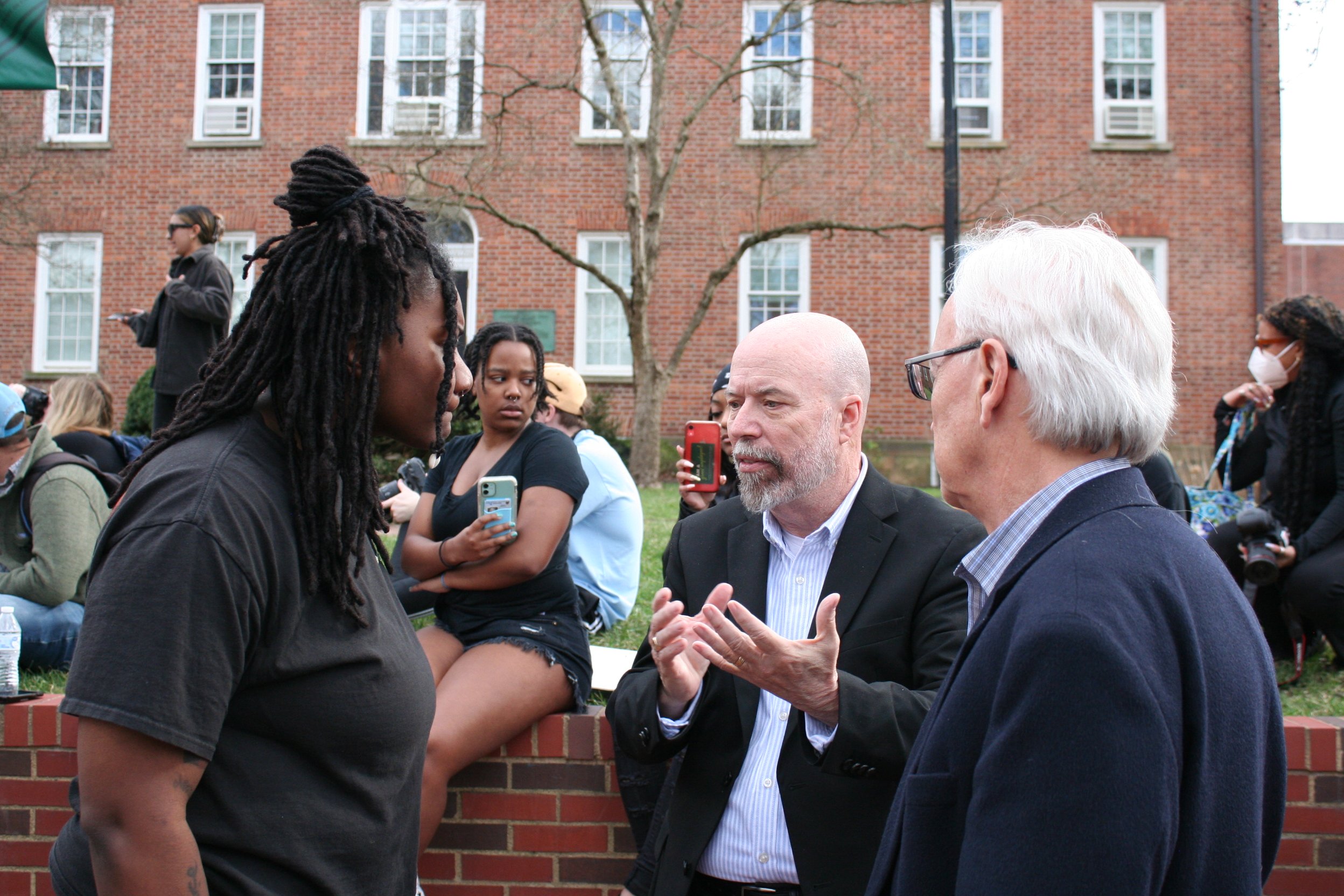
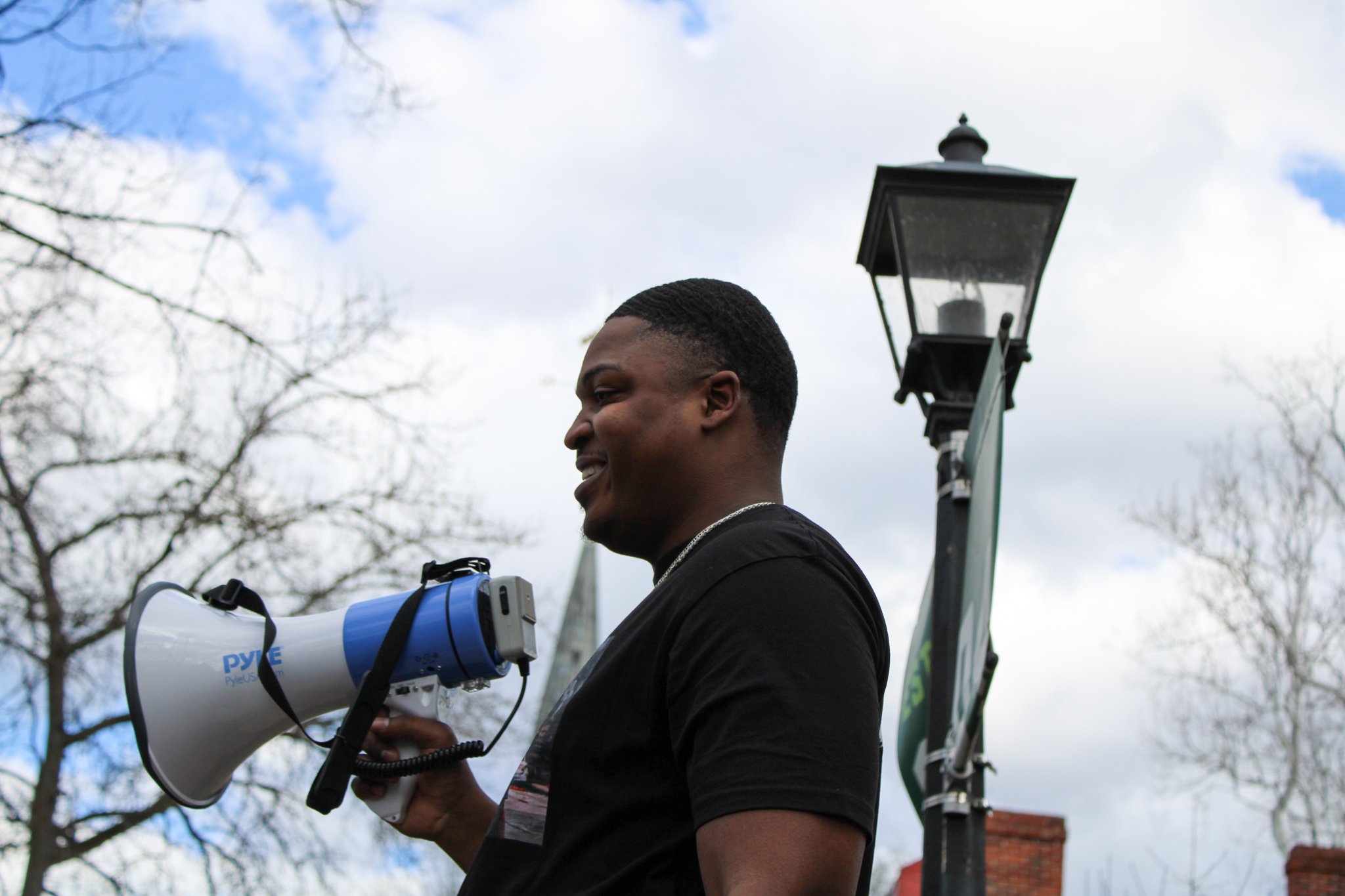

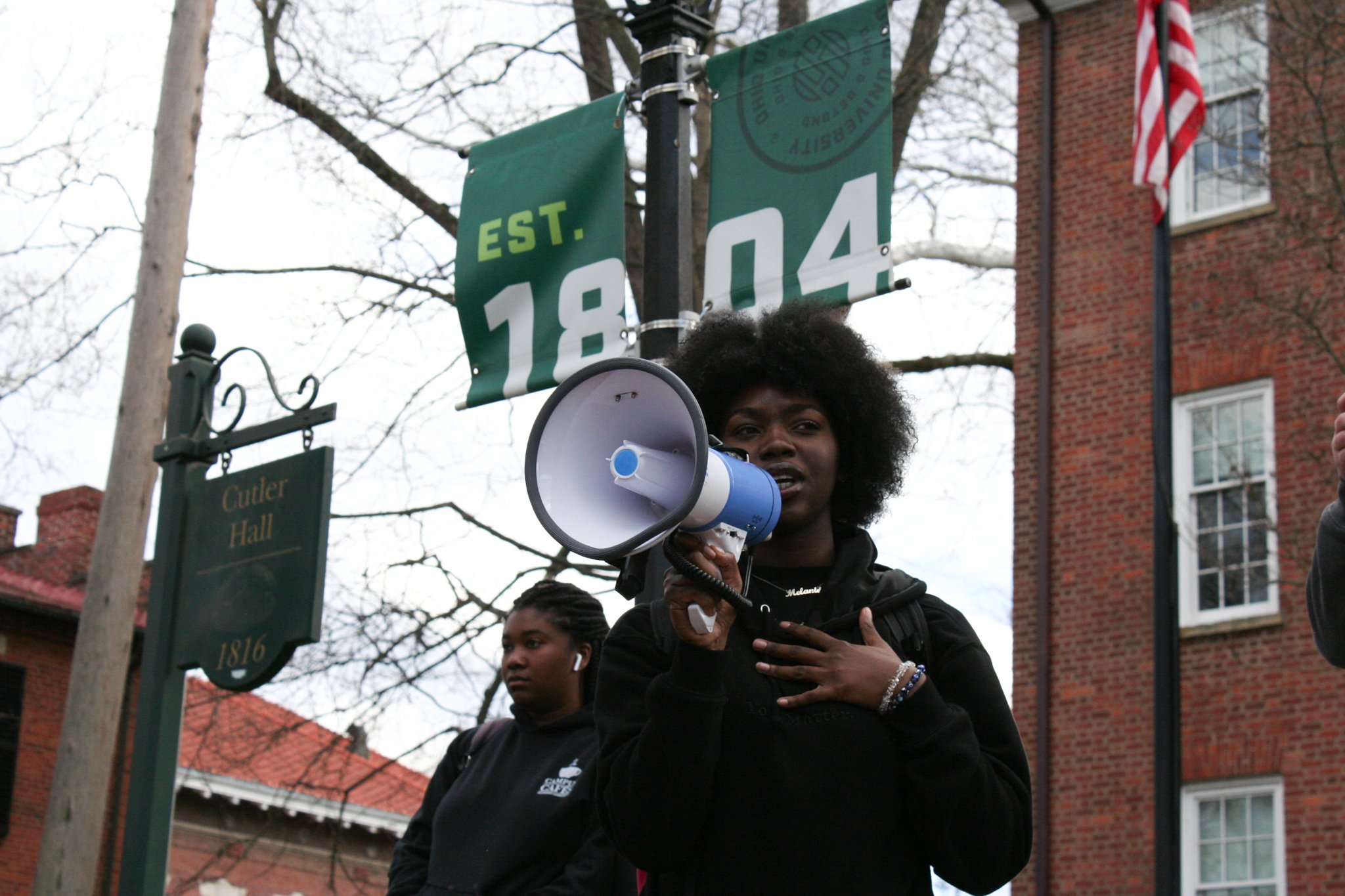


Content Warning: The content of this story depicts acts of hate and racism.
In response to the various racially motivated incidents occurring in Ohio University’s campus residence halls, students rallied together to demand action. Students marched from Peden Stadium to Cutler Hall on Thursday afternoon to hold a protest against racism at Ohio U, organized by Ohio U Student Senate and Ohio U’s Minority Association of Pre-Health Students.
Gathered outside of Peden Stadium, roughly 200 students chanted “No policy, no peace,” protesting what they described as a lack of university policy to combat racism. They marched through Walter Hall, Grover Center and up the Baker Center’s escalators before arriving at Cutler.
Students with signs reading “Black Lives Matter,” “Expel Brady Linkel,” “We demand respect and change” and “‘OU is committed’ to preserving its image #DoBetter,” gathered around Cutler.
Students hoped the protest would lead to change within Ohio U. Prior to the protest in front of Cutler hall, newly appointed Student Senate treasurer Trinity Robinson spoke about what she hopes the protest conveys to Ohio U students and university administration.
“As a Black community, we're tired,” Robinson said. “We're tired of being disrespected, disrespected, disrespected. Simply just for being who we are, that's tiring. And how are we expected to do that and show up to class every day, show up to student organizations to not only uplift other Black students on this campus, but to get our multicultural community increased at Ohio University? This is a large turnoff to a lot of incoming students and that's disgusting. And Ohio University with their statements and their emails. Excuse my French but it means shit to nobody. We just simply want respect.”
Another student, Tamryn Lindsay, a freshman studying chemistry on a pre-med track, hoped fellow Bobcats would stand up for one another and understand that all Ohio U students are here for the same reason: to learn and make memories.
“I think that now more than ever is the time that minorities, like people of color, at this school need to stick together, rather than trying to tear each other apart,” Lindsay, who attended the protest, said in a phone interview. “There’s a lot going on around us, and we should all be sticking up for each other and just making sure that we are all okay and keeping an eye out for each other. And even like allies of white students here, letting others know that if you hear about or see something like this happening, to let them know that it’s not cool to do. We all go to school here, and we’re all here to learn, have fun, make memories. Like, I just don’t want this to keep happening and ruin everybody’s college experience overall.”
On College Green, students stood with a megaphone to voice their thoughts on the recent incidents and the university’s response.
Christopher Brown, a resident assistant in James hall who has since moved out, posted on Twitter about a resident, Brady Linkel, urinating on his door and damaging his property. The tweet has since gone viral and Linkel has been charged with criminal mischief by Ohio University Police Department.
Speaking in front of the crowd gathered in front of Cutler hall, Brown described the incident.
“On March 21, I was awoken at 2:30 a.m. to a white resident peeing on my door. Now mind you, his door is about seven doors down the hall, and my door is probably about two away from the bathroom,” Brown said, adding that the resident was not sleepwalking nor belligerently drunk.
On March 20, a photo was shared of a trash bag with a racially derogatory note left outside a room in Sargent hall, which has since sparked outrage on social media and several university investigations.
Students described their own experiences with racism to the crowd, along with the action they demand to see from the university.
“As a Black male on campus in today’s America, I’m sick of all these white people telling me how I should feel,” said Maurice Swift of the Multicultural Student Organization Coalition. “That doesn’t do anything. You don’t know how I feel as a Black man because you’re not a Black man. You can’t tell me how I should feel because y’all have never been in my shoes. Y’all will never feel how I feel. Y’all have white male privilege. Y’all get to go home at the end of the day and act like none of this ever happened. We have to go home and think about who doesn’t like us … They do not feel safe.”
Erykah Gaston, a junior majoring in Child Development, emphasized the university’s avoidance of labeling events as being racially motivated.
“If my blood were on these walls, you wouldn’t call it a hate crime. You’d call it property damage.” Gaston said.
Nearing the end of the rally, President Hugh Sherman addressed the crowd as requested by Robinson.
“I don’t want to have any more meetings behind closed doors, I want to talk about it today. It’s today,” Robinson said to Sherman in a side conversation, “If you don’t speak at the end of this – this is your time to listen, you have your time to speak in front of the crowd of people that need to hear you.”
Sherman spoke to the crowd of about 200 protesters.
“I think what needs to happen is that there's a continued dialogue, and that there's actual time that we sit down and constructively look for actions we can take to make all of you feel safe and supported at our university,” Sherman said. “Because we want this to be a special community for every person on Earth.”
Following Sherman’s speech, Robinson said, “I want y’all to pay very close attention to not only what he said, but his emotion behind it, because that speaks volumes. Actions do speak louder than words so if there are no actions, you already show how you feel about the Black kids on this campus.”
As the protest ended around 5:30 p.m., Swift hoped that the university heard that its multicultural students “are hurting. Like, we can only do so much. We really just want to be heard and the hoops that we're having to jump through to be heard is perplexing.”
Many students expressed that Sherman’s statement fell short and was largely disappointing. Simply put, protesters wanted more from Sherman; they wanted him to address their concerns, show emotion and set a plan to prevent further racist incidents from happening on Ohio U campuses.
“I feel like he really memorizes the emails that he sends, the repetitive emails that are copy and paste,” Gaston said when asked what she thought of Sherman’s address. “It's exactly what he said on stage, which is basically nothing. He didn't actually address anything he would do. He didn't address what we want and what the people have been speaking about. He addressed how he doesn't want the school to look bad. He talks about how he will make changes in the future. But he can't name a single thing that needs to be changed, because nothing is going to happen. And so it was a very disappointing speech, especially to be put on the spot when students are in front of you crying and speaking their hearts out to you, yet you can't show a single bit of emotion.”
Overall, organizers believed the protest was successful; however, they still expect change from Ohio U and hope to see changes in the near future.
“I hope that everybody's voices, that wanted their voices heard, was heard, and I do think it was very successful. But I do think that it's time for the university to put their money where their mouth is and say it shows actually,” Swift said.
Madeline Harden, Audrianna Wilde, Zach Zimmerman, Izzy Keller, Claire Del Vita and Brenna Nye contributed to this report.
Read our documentation of the events via social media below:
